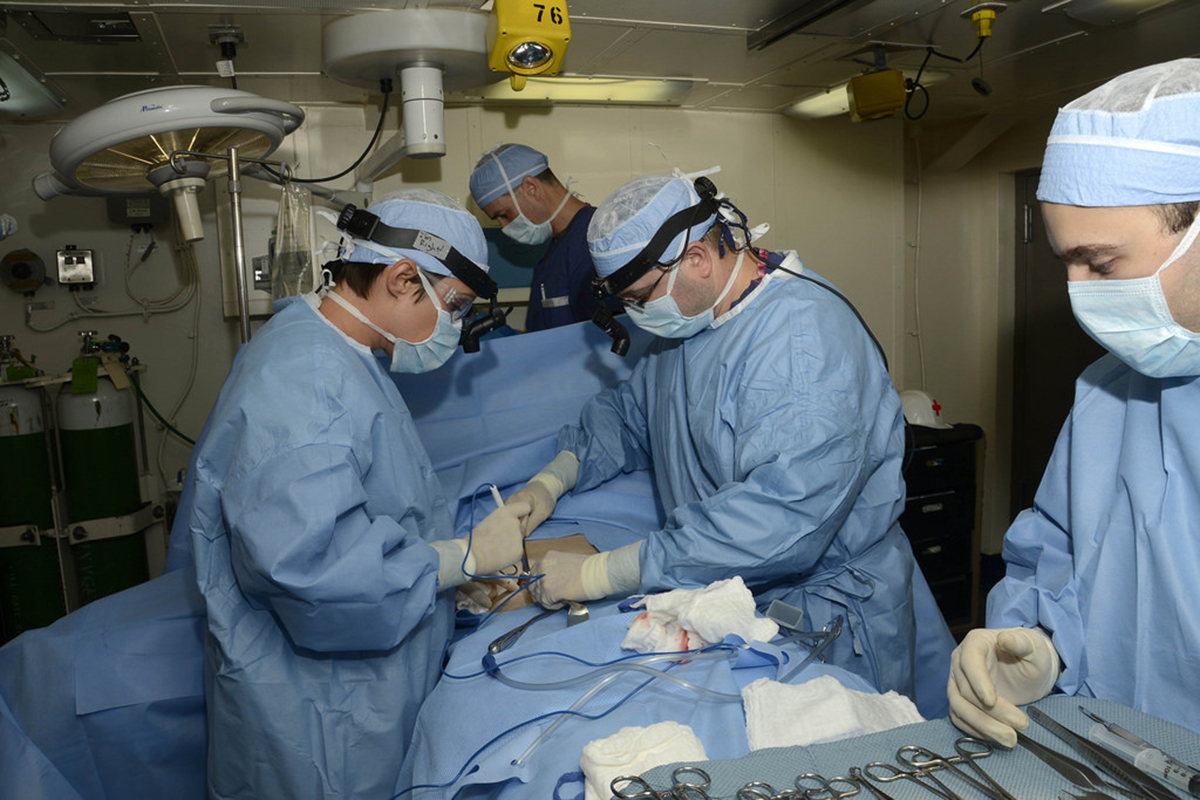Table of Contents
The management of appendicular mass is still debatable. There are two distinct schools of thought that exist with respect to the modes of treatment. At present, four methods are being used, and supporters and critics exist for each.

1. Conventional Method with Interval Appendectomy: The Ochsner-Sherren Regime
This is a conventional method that assumes that the patient is sound and begins with an initial conservative treatment. After about 6-8 weeks, an interval appendectomy is performed if necessary. The basis of this method was the belief that surgery during the period of acute appendicitis was significantly dangerous and life-threatening. This was because of the severe complications such as edema and fragility of important structures like the terminal ileum and cecum due to the appendicular mass. [5]
The main steps involved in this regime are as follows:
- The patient is made to sit in an upright position in order to promote the flow of any exudates naturally towards the pelvis.
- Nothing is administered via the mouth for the first 24-48 hours. The patient is kept strictly on IV fluids.
- IV antibiotics may be given along with the regular monitoring of vital signs and the size of the appendicular mass.
- In certain cases, the general condition of the patient improves and reduction in the size of the mass is seen. Moreover, fever and lack of appetite also subside. The patient is then normally allowed to have liquids orally, followed slowly by food. If the patient is able to tolerate the food and water, he is considered for being sent home. After about 6-8 weeks, an interval appendectomy is performed.
- On the contrary, the overall condition of the patient may start to deteriorate. The mass may increase in size, the pulse rate may rise, general peritonitis may occur, and the patient may become septic. In such a scenario, the period of conservative management is shortened and appendectomy is considered.
2. Conservative Method without Interval Appendectomy
This form of conservative treatment does not involve an interval appendectomy. It was introduced after the Ochsner-Sherren regime was seen to have failed in 2-3% of the cases. According to some researchers, an interval appendectomy was considered to be a tedious operation, at times unable to find the fibrotic appendix altogether. This led to the development of a cost-effective ‘wait and watch policy’, where monitoring the results of the conservative treatment was given priority instead of ultimately resorting to surgery. [6]
Conservative treatment such as this has been found to be solely adequate in 80% of patients. The highest risk of developing recurrent appendicitis, after undergoing an effective conservative management, lies in the first 6 months. These risks diminish to a minimum of 2 years.
3. Early Appendectomy
This is an aggressive approach that favors the removal of the appendicular mass at the early stages of infection.
A study that compared the delayed appendectomy with an early appendectomy concluded that delayed appendectomy was safe and feasible for adult patient although the clinical outcomes of delayed appendectomy were not superior to those of early appendectomy. The study suggests that surgeons decide the appropriate timing of appendectomy, citing available hospital resources as one of the biggest factors.[7] Other studies conclude that early appendicectomy has been found to be a safe and better alternative for management of appendicular mass in various studies in adults, while only a few studies report advantages like these in the pediatric population.[8]
4. Laparoscopic Management
This minimally-invasive procedure is the most recent advancement in the treatment of appendicular mass and is becoming the preferred technique for treating acute appendicitis. However, its role in the treatment of complicated appendicitis is still controversial, despite the fact that new research continues to show that laparscopy is a safe way to manage an appendicular mass. [9]
- Photo courtesy of U.S. Pacific Air Forces by Flickr: www.flickr.com/photos/pacificairforces/7183303571
- Photo courtesy of U.S. Naval Forces Central Command/U.S. Fifth Fleet by Flickr: www.flickr.com/photos/navcent/15481839211
- www.ijsurgery.com/index.php/isj/article/view/2724
- www.ncbi.nlm.nih.gov/pmc/articles/PMC4587501/#:~:text=An%20appendiceal%20mass%20is%20an,(CT)%2C%20and%20ultrasound

